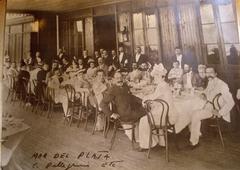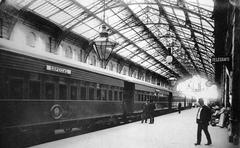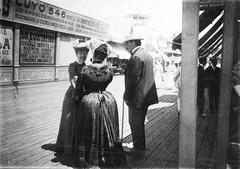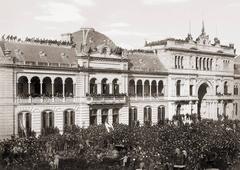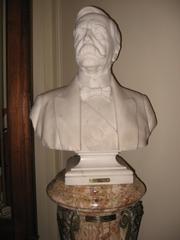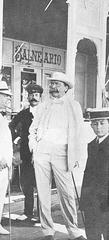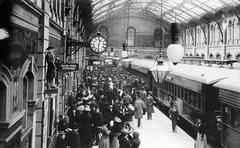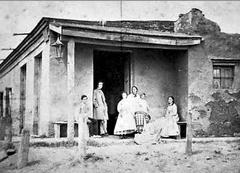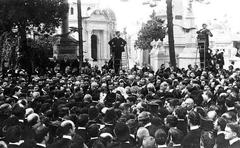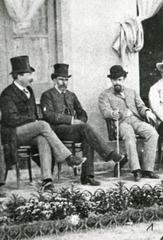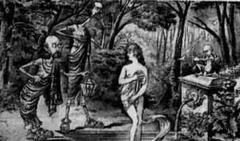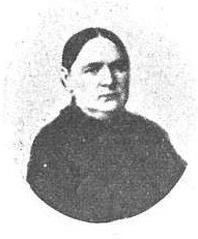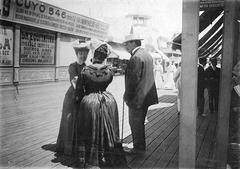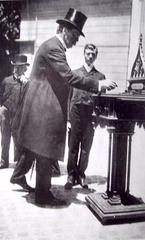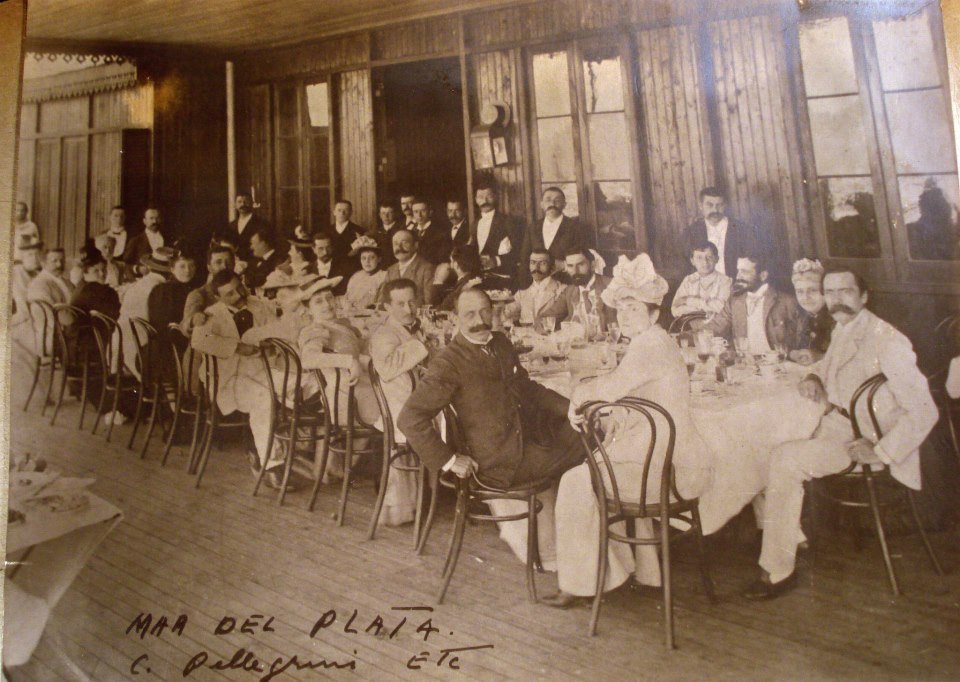
Carlos Pellegrini Buenos Aires: Visiting Hours, Tickets, and Historical Sites Guide
Date: 14/06/2025
Introduction
Nestled at the bustling crossroads of Buenos Aires, the Carlos Pellegrini Monument and its surrounding urban landscape provide a window into Argentina’s political evolution and cosmopolitan spirit. Carlos Pellegrini, revered as “el piloto de tormentas” (“the storm pilot”), led the nation through economic turmoil in the late 19th century, leaving an indelible mark with reforms that catalyzed Argentina’s modernization. Today, his legacy is enshrined in the city’s geography: from the grand Avenida Carlos Pellegrini and the central subway station bearing his name, to the neoclassical monument at Plaza Pellegrini near the iconic Obelisco.
This guide offers a comprehensive overview for travelers and locals alike, covering everything from practical visitor information and accessibility to the historical significance of Pellegrini’s contributions. Dive in to discover how to plan your visit, appreciate the area’s urban vitality, and enrich your understanding of Buenos Aires’ dynamic heritage (turismo.buenosaires.gob.ar, Secrets of Buenos Aires).
Table of Contents
- Why Visit the Carlos Pellegrini Sites?
- About Carlos Pellegrini: Historical Overview
- Visiting the Carlos Pellegrini Monument and Surrounding Area
- Nearby Attractions
- Travel Tips for Visitors
- FAQ
- Urban and Cultural Significance
- Practical Visitor Tips
- Conclusion and Additional Resources
Why Visit the Carlos Pellegrini Sites?
The Carlos Pellegrini monument and its environs pay tribute to one of Argentina’s most influential leaders, whose reforms shaped the nation’s economic and civic trajectory. This central district, alive with history and modern commerce, is a nexus for discovering Buenos Aires’ layered identity. Visitors can explore grand avenues, bustling transit hubs, and vibrant public spaces—all while connecting with the legacy of a president who steered Argentina through challenging times.
About Carlos Pellegrini: Historical Overview
Carlos Pellegrini (1846–1906), of English and Swiss-Italian descent, served as Argentina’s president from 1890 to 1892. He is celebrated for guiding the country out of the 1890 financial crisis, founding the Banco de la Nación Argentina, and advancing fiscal and industrial reforms (encyclopedia.com, wikipedia.org). His legacy is deeply woven into Buenos Aires, with avenues, subway stations, and a prominent monument commemorating his vision for modernization and national unity.
Visiting the Carlos Pellegrini Monument and Surrounding Area
Location and Getting There
- Address: Plaza Pellegrini, intersection of Avenida 9 de Julio and Avenida Carlos Pellegrini, Buenos Aires.
- Coordinates: Approx. -34.6022, -58.3827.
- Nearest Subway Station: Carlos Pellegrini Station (Lines B, C, and D).
- Bus Access: Multiple lines stop at Avenida 9 de Julio and Avenida Corrientes (touristlink.com).
- Walking: A short stroll from central attractions such as the Obelisco, Teatro Colón, and Plaza de la República.
- Taxi/Rideshare: Widely available; use “Monumento a Carlos Pellegrini, Plaza Pellegrini, Buenos Aires” as your destination (Short Girl on Tour).
Visiting Hours and Access
- Monument and Plaza: Open 24 hours a day, 7 days a week; no official closing time.
- Admission: Free, with unrestricted access at all hours (Evendo).
Accessibility
- Wheelchair Access: Ramps and smooth surfaces throughout plaza and subway stations; elevators available (ssplan.buenosaires.gov.ar).
- Public Restrooms: Accessible facilities located nearby.
Guided Tours and Events
- Guided Walking Tours: Many city tours include the monument and its historical context.
- Special Events: Cultural and historical activities, particularly around key anniversaries or during city festivals in June (allevents.in).
- Interpretive Signage: Informational plaques on-site (Spanish language).
Photographic Opportunities
- Capture panoramic views with the Obelisco and city skyline as backdrops.
- Best lighting for photos: early morning or late afternoon.
Monument Features and Artistic Details
- Architectural Style: Neoclassical and allegorical, reflecting early 20th-century trends.
- Sculptor: Jules Lagae.
- Inauguration: 1914.
- Materials: Bronze statue atop granite pedestal, with bas-reliefs depicting Justice, Progress, and the Argentine Republic.
- Symbolism: Pellegrini’s pose and accompanying figures emphasize leadership, reform, and national unity (adequatetravel.com).
- Dimensions: Approximately 8 meters (26 feet) in height.
Nearby Attractions
- Obelisco de Buenos Aires: The city’s iconic monument, steps away from the plaza.
- Teatro Colón: Renowned opera house and architectural jewel, open for guided tours (planetware.com).
- Avenida Corrientes: “The Broadway of Buenos Aires,” famed for theaters, bookstores, and nightlife.
- Recoleta Cemetery: Final resting place of notable Argentines, a short ride away (Wanderlust Photos Blog).
Travel Tips for Visitors
- Best Time to Visit: Spring (October–November) and autumn (March–April) for mild weather and blooming jacaranda trees (Secrets of Buenos Aires).
- Safety: Area is safe during the day; exercise standard precautions at night.
- Language: Spanish is predominant; some signage and tours available in English.
- Amenities: Cafés, restaurants, shops, and public seating are plentiful nearby.
- Transportation: Use the SUBE card for seamless travel on public transport (solsalute.com).
Urban and Cultural Significance
Urban Core and Connectivity
The Carlos Pellegrini area anchors Buenos Aires’ dense urban core, linking Avenida Corrientes, Avenida 9 de Julio, and key transit lines (mapcarta.com). It serves as a vital commercial and social hub, drawing over a million commuters daily (ssplan.buenosaires.gov.ar). Recent pedestrianization projects have prioritized walkability, public space, and sustainable urban mobility (academia.edu).
Cultural Landscape
The area is alive with events, from open-air music and language exchanges to tango shows and theatrical performances at nearby venues (allevents.in). Cafés, historic eateries, and bookshops along Avenida Corrientes and Florida Street embody the city’s creative pulse and cosmopolitan flair.
Civic Importance
More than a monument, the site is a gathering place for public celebrations, protests, and civic life, reinforcing Pellegrini’s status as a symbol of stability and progress.
Practical Visitor Tips
- Plan Ahead: Group nearby attractions to optimize your itinerary (Short Girl on Tour).
- Currency: Carry some Argentine pesos for small purchases.
- Language: Basic Spanish phrases enhance your experience (Milesopedia).
- Footwear: Wear comfortable shoes for walking and cobblestone streets.
- Event Awareness: Check local calendars for festivals or races (e.g., Clean City Race) that may affect area accessibility (Noticias Ambientales).
Frequently Asked Questions (FAQ)
Q: What are the visiting hours?
A: The monument and plaza are accessible 24/7; no tickets or reservations are required.
Q: Are guided tours available?
A: Yes, numerous city tours include the monument; check with local operators or the Buenos Aires tourism office.
Q: Is the area wheelchair accessible?
A: Yes, with ramps, elevators, and smooth surfaces throughout.
Q: What are the best nearby attractions?
A: Obelisco, Teatro Colón, Avenida Corrientes, Recoleta Cemetery, and Plaza de Mayo.
Q: How do I reach the monument by public transport?
A: Take the subway (Lines B, C, or D) to Carlos Pellegrini station, or use any major bus line on Avenida 9 de Julio.
Conclusion and Additional Resources
The Carlos Pellegrini Monument is a vital touchstone for understanding Buenos Aires’ history, culture, and modern life. With its open access, central location, and rich symbolism, it stands as both a historical landmark and a lively urban space. Enhance your visit by exploring neighboring attractions, participating in local events, and immersing yourself in the city’s vibrant rhythm.
For more travel planning, check official sources and comprehensive guides:
Download the Audiala app for personalized maps, insider tips, and up-to-date event information, and follow our social channels for travel inspiration.
Image suggestions: Include high-quality photos of the Carlos Pellegrini Monument, Obelisco, subway station entrances, and pedestrian zones, with descriptive alt tags for accessibility and SEO.
Sources
- turismo.buenosaires.gob.ar
- Secrets of Buenos Aires
- touristlink.com
- planetware.com
- Evendo
- Short Girl on Tour
- adequatetravel.com
- ssplan.buenosaires.gov.ar
- mapcarta.com
- allevents.in
- solsalute.com
- Noticias Ambientales
- CN Traveller
- Wanderlust Photos Blog
- Milesopedia
- academia.edu
- encyclopedia.com
- wikipedia.org
